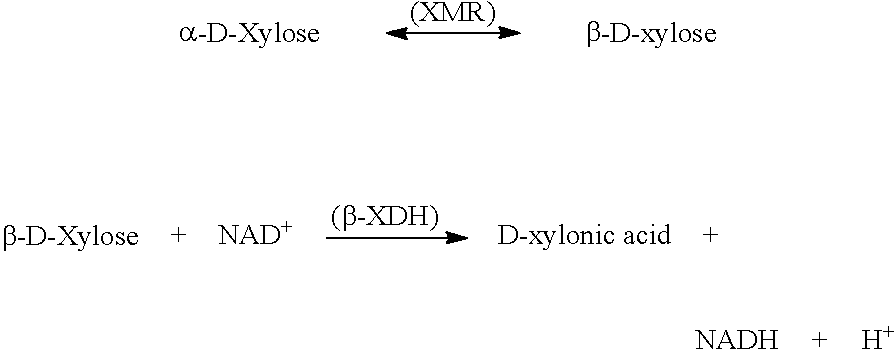Wet milling process
a technology of wet milling and wet milling, which is applied in the direction of biofuels, etc., can solve the problems of not being suitable as starting material for starch conversion processes, and achieve the effect of exemplary
- Summary
- Abstract
- Description
- Claims
- Application Information
AI Technical Summary
Benefits of technology
Problems solved by technology
Method used
Image
Examples
example 1
[0399]The 10-g fiber assay generally includes incubating wet fiber samples obtained from wet-milling plant, in the presence of enzymes, at conditions relevant to the process (pH 3.5 to 4, Temp around 52° C.) and over a time period of between 1 to 4 hr. After incubation the fiber is transferred and pressed over a screen (typically 100 micron or smaller), where the filtrates consisting mainly of the separated starch and gluten are then collected. A number of washes are done over the screen, and the washings are collected together with the initial filtrate. The collected filtrate are then passed over a funnel filter (glass filter with 0.45 micron opening) to further separate the insoluble solids (starch and gluten) from the rest of the filtrates (mostly dissolved solids). These retained insoluble solids are washed and then oven dried to dryness. The insoluble dry mass is weighed and then analyzed for starch content.
[0400]10-g fiber assay is performed at pH 3.8, incubating at 52° C. for...
example 2
[0425]10-g fiber assay is performed at pH 4.0, incubating at 52° C. for 4 hour at doses of 35 ug EP / g corn, using a blend of Cellulase K, Cellulase L, or Cellulase N, in further combination with Protease D and GH62 Arabinofuranosidase C. Blend consists of 10% (w / w) Protease D, 10% (w / w) of GH62 Arabinofuranosidase C, and the remaining 80% (w / w) from Cellulase K / Cellulase L / Cellulase N. For comparison, a blend containing Cellulase K and GH62 Arabinofuranosidase C only (no GH62) was included. Release of starch+gluten (dry substance) from corn fiber at the specified doses below was measured.
[0426]
Dose (ug enzymeStarch + GlutenTreatmentsprotein / g corn)RecoveredNo Enzyme015.1%Cellulase K + Protease D3518.7%Cellulase K + Protease D7019.4%Cellulase K + Protease D + GH623520.8%Arabinofuranosidase CCellulase N + Protease D + GH623520.4%Arabinofuranosidase CCellulase L + Protease D + GH623520.6%Arabinofuranosidase C
example 3
[0427]10-g fiber assay is performed at pH 4.0, incubating at 52° C. for 4 hour at doses of 35 ug EP / g corn or 50 ug EP / g corn or 70 ug EP / g corn, using a blend of either Cellulase L or Cellulase N, in combination with Protease D and GH62 Arabinofuranosidase B. Blend consists of 10% (w / w) Protease D, 10% (w / w) of GH62 Arabinofuranosidase B, and the remaining 80% (w / w) from either Cellulase L or Cellulase N. For comparison, a blend containing no GH62 was included. Release of starch+gluten (dry substance) from corn fiber at the specified doses below was measured.
[0428]
Dose (ug enzymeStarch + GlutenTreatmentsprotein / g corn)RecoveredCellulase N + Protease D7021.9%Cellulase N + Protease D + GH623520.9%Arabinofuranosidase BCellulose N + Protease D + GH625022.0%Arabinofuranosidase BCellulose N + Protease D + GH627024.9%Arabinofuranosidase BCellulose L + Protease D + GH623520.9%Arabinofuranosidase BCellulose L + Protease D + GH625023.2%Arabinofuranosidase B
PUM
 Login to View More
Login to View More Abstract
Description
Claims
Application Information
 Login to View More
Login to View More - R&D
- Intellectual Property
- Life Sciences
- Materials
- Tech Scout
- Unparalleled Data Quality
- Higher Quality Content
- 60% Fewer Hallucinations
Browse by: Latest US Patents, China's latest patents, Technical Efficacy Thesaurus, Application Domain, Technology Topic, Popular Technical Reports.
© 2025 PatSnap. All rights reserved.Legal|Privacy policy|Modern Slavery Act Transparency Statement|Sitemap|About US| Contact US: help@patsnap.com

